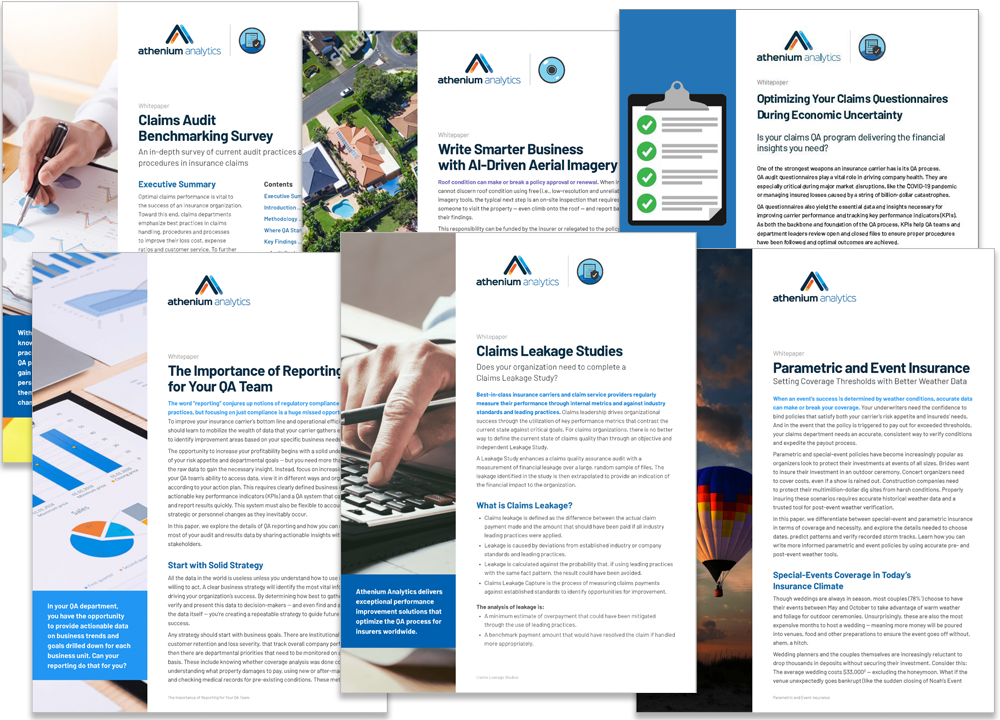Performing quality assurance audits on your book of business is a crucial (and in most cases, compliance-required) action. Discovering if and where issues arise from helps a carrier build best practices, improve performance and prevent leakage. But uncovering issues is only half the equation – a good business manager also knows how to analyze performance, develop action plans and track improvements.
In order to actually implement changes and drive progress across the organization, QA leaders should be assigning tasks to managers, increasing their involvement in staff development and building a more robust structure for the development planning process. There also needs to be a focus on aligning QA goals with company-wide goals and KPIs. In QA underwriting, there are three common pitfalls QA managers face that can negatively affect outcomes. Let’s explore those three common issues below.
Are you using the correct underwriting questionnaire?
The first common pitfall that can negatively affect underwriting quality is not having the right questionnaire. Typically, underwriting organizations have two ways that they approach building a review form. The first approach involves combining all lines of business into a single audit questionnaire. The second one is creating separate questionnaires for each policy or line of business. There is no judgment here on either method – both can be beneficial, and both can have their faults. However, before choosing which method to use, QA leaders need to ensure the audit results align with their organizational goals. If the goal is to score the overall account health and focus less on the individual lines of business, then the first approach is the right one to take. If the goal is to better understand how each policy scores, the second way is the proper method. But either way, keeping in mind the end goal of your underwriting audits is crucial for preventing unnecessary confusion, errors and manual labor.
Are you correctly measuring underwriting quality?
The second common pitfall QA managers make involves how they measure and score underwriting quality. Underwriting scoring methodology in QA tends to be more complicated than claims, but it doesn’t necessarily have to be. Often, organizations will over-complicate the scoring – weighting multiple pieces of the review more heavily and creating knockout questions or phases. This can be beneficial in some cases, but can also lead to more confusion. Just producing high scores shouldn’t be the end goal of an underwriting audit. Instead, the goal should be finding improvement opportunities in your underwriting process. Was the risk analysis handled appropriately? Was the premium adequate? If the answer is yes to both of these, the underwriter did a good job. If the answer is no, they did a poor job. And everywhere in between opens up opportunities – opportunities for training, for recovery and for feedback. It’s finding and addressing these opportunities that should be the end goal. It’s how the organization learns from issues and improves on them. This may be reflected in the score, but the scoring doesn’t tell the whole story, regardless of how it’s derived.
Do you understand the true causes of underwriting leakage?
The third and final pitfall QA leaders make is how they analyze premiums and leakage. As previously mentioned, one of the keys for driving underwriting quality is assessing whether the appropriate premium was collected. Does the money charged adequately cover the risk to the company? And where credits and debits were applied, were they done so appropriately? Assessing how far off the premium is from adequate levels – or how often discounts are applied – can help to determine whether an underwriting group is on the right track. And perhaps even more importantly, if there are issues with premiums and leakage, how can this be corrected? Solutions might include remedial action, renewal assessment, best practices refinement or training activities. In order to improve financial outcomes, insurance carriers need to do more than just capture leakage in the QA process – they need to flag those policies so the problems don’t persist.
All of the pitfalls above can be prevented by keeping one principle in mind: your QA process must align with your wider organizational goals. Understanding those goals is essential for building an underwriting QA program that captures the right data and allows you to address problems quickly as they arise. Want to improve your underwriting quality but not sure where to start? Athenium Analytics can help.
Enhance your quality program with teamthink Envoy for underwriting
GaugeQuality is a web-based insurance QA suite that streamlines the underwriting audit process with key features like questionnaire builders, policy integration, automated file selection and an interactive reporting dashboard. Discover why more insurance carriers are making the switch from manual spreadsheets to QA automation. Learn more about GaugeQuality here: https://www.athenium.com/products/gauge-quality/
Webinar: 5 hurdles hindering continuous improvement & how to address them
Want to get more from your underwriting QA data? Access this pre-recorded webinar as our team discusses the hurdles insurance carriers face in driving continuous improvement and what you and your team can do to overcome them. View the webinar now.






